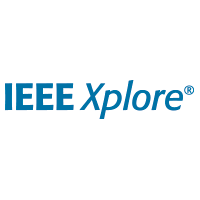ieeexplore.ieee.org/document/10637565
Preview meta tags from the ieeexplore.ieee.org website.
Linked Hostnames
2Thumbnail

Search Engine Appearance
Digital Twin Continuum: a Key Enabler for Pervasive Cyber-Physical Environments
The rise of Digital Twin (DT) technology has revolutionized various sectors, offering simulation, monitoring, and optimization capabilities for complex systems. However, the rapid expansion of DT platforms, coupled with the need to deploy twins across the edge-to-cloud computing spectrum, has led to significant fragmentation and management challenges. These complexities should not hinder the application layer’s goal of achieving interoperability and integrated management of DT instances. This paper introduces the Digital Twin Continuum (DTC) as a unified framework to address the challenges of DT coordination, hiding platform intricacies, while tackling the orchestration of communication and computing resources in the edge-to-cloud continuum. In this study, we define the concept of DTC, outlining its modeling principles, core functionalities and architectural components. We conduct an initial experimental evaluation of a DTC prototype in a realistic automotive use case, targeting two reference DT runtimes.
Bing
Digital Twin Continuum: a Key Enabler for Pervasive Cyber-Physical Environments
The rise of Digital Twin (DT) technology has revolutionized various sectors, offering simulation, monitoring, and optimization capabilities for complex systems. However, the rapid expansion of DT platforms, coupled with the need to deploy twins across the edge-to-cloud computing spectrum, has led to significant fragmentation and management challenges. These complexities should not hinder the application layer’s goal of achieving interoperability and integrated management of DT instances. This paper introduces the Digital Twin Continuum (DTC) as a unified framework to address the challenges of DT coordination, hiding platform intricacies, while tackling the orchestration of communication and computing resources in the edge-to-cloud continuum. In this study, we define the concept of DTC, outlining its modeling principles, core functionalities and architectural components. We conduct an initial experimental evaluation of a DTC prototype in a realistic automotive use case, targeting two reference DT runtimes.
DuckDuckGo
Digital Twin Continuum: a Key Enabler for Pervasive Cyber-Physical Environments
The rise of Digital Twin (DT) technology has revolutionized various sectors, offering simulation, monitoring, and optimization capabilities for complex systems. However, the rapid expansion of DT platforms, coupled with the need to deploy twins across the edge-to-cloud computing spectrum, has led to significant fragmentation and management challenges. These complexities should not hinder the application layer’s goal of achieving interoperability and integrated management of DT instances. This paper introduces the Digital Twin Continuum (DTC) as a unified framework to address the challenges of DT coordination, hiding platform intricacies, while tackling the orchestration of communication and computing resources in the edge-to-cloud continuum. In this study, we define the concept of DTC, outlining its modeling principles, core functionalities and architectural components. We conduct an initial experimental evaluation of a DTC prototype in a realistic automotive use case, targeting two reference DT runtimes.
General Meta Tags
12- titleDigital Twin Continuum: a Key Enabler for Pervasive Cyber-Physical Environments | IEEE Conference Publication | IEEE Xplore
- google-site-verificationqibYCgIKpiVF_VVjPYutgStwKn-0-KBB6Gw4Fc57FZg
- DescriptionThe rise of Digital Twin (DT) technology has revolutionized various sectors, offering simulation, monitoring, and optimization capabilities for complex systems.
- Content-Typetext/html; charset=utf-8
- viewportwidth=device-width, initial-scale=1.0
Open Graph Meta Tags
3- og:imagehttps://ieeexplore.ieee.org/assets/img/ieee_logo_smedia_200X200.png
- og:titleDigital Twin Continuum: a Key Enabler for Pervasive Cyber-Physical Environments
- og:descriptionThe rise of Digital Twin (DT) technology has revolutionized various sectors, offering simulation, monitoring, and optimization capabilities for complex systems. However, the rapid expansion of DT platforms, coupled with the need to deploy twins across the edge-to-cloud computing spectrum, has led to significant fragmentation and management challenges. These complexities should not hinder the application layer’s goal of achieving interoperability and integrated management of DT instances. This paper introduces the Digital Twin Continuum (DTC) as a unified framework to address the challenges of DT coordination, hiding platform intricacies, while tackling the orchestration of communication and computing resources in the edge-to-cloud continuum. In this study, we define the concept of DTC, outlining its modeling principles, core functionalities and architectural components. We conduct an initial experimental evaluation of a DTC prototype in a realistic automotive use case, targeting two reference DT runtimes.
Twitter Meta Tags
1- twitter:cardsummary
Link Tags
9- canonicalhttps://ieeexplore.ieee.org/document/10637565
- icon/assets/img/favicon.ico
- stylesheethttps://ieeexplore.ieee.org/assets/css/osano-cookie-consent-xplore.css
- stylesheet/assets/css/simplePassMeter.min.css?cv=20250812_00000
- stylesheet/assets/dist/ng-new/styles.css?cv=20250812_00000
Links
17- http://www.ieee.org/about/help/security_privacy.html
- http://www.ieee.org/web/aboutus/whatis/policies/p9-26.html
- https://ieeexplore.ieee.org/Xplorehelp
- https://ieeexplore.ieee.org/Xplorehelp/overview-of-ieee-xplore/about-ieee-xplore
- https://ieeexplore.ieee.org/Xplorehelp/overview-of-ieee-xplore/accessibility-statement